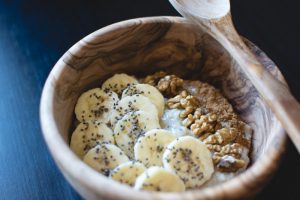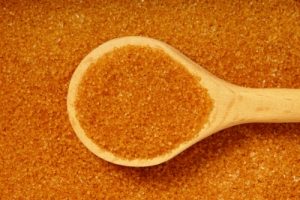Perimenopause, the transitional phase before menopause, brings hormonal changes that can affect your metabolism and increase the risk of insulin resistance. Insulin resistance is when muscles, the liver, and fat tissue stop responding well to insulin. This means insulin doesn’t work as effectively as it should, even when blood sugar levels are normal. Left unchecked, it may increase the risk of Type 2 diabetes. Thankfully, lifestyle changes, especially nutrition, can help you maintain healthy insulin sensitivity before it becomes problematic.
Key Nutrition Strategies
- Embrace Magnesium-Rich Foods:
Magnesium is the body’s fourth most abundant mineral, following calcium, potassium, and sodium. More than 600 enzymes rely on magnesium to function properly, and another 200 may need it to work more effectively. Magnesium plays a vital role in glucose metabolism by acting as an important signalling agent to help with insulin sensitivity. Magnesium deficiency may cause beta-cell dysfunction in the pancreas, impaired insulin signalling, and the development of chronic low-grade inflammation, all leading to changes in carbohydrate and energy metabolism. This can ultimately contribute to the development of insulin resistance, and in the long term, Type 2 Diabetes. Perimenopausal women often have lower magnesium levels due to hormonal shifts. Include foods like spinach, almonds, pumpkin seeds, and small amounts of dark chocolate (70% cocoa or higher). For perimenopausal women, and especially those at risk of insulin resistance, take a magnesium supplement starting at 300mg per day. - Prioritise Resistant Starch:
Found in foods like cooked-and-cooled potatoes, green bananas, and lentils, resistant starch feeds beneficial gut bacteria, improving insulin sensitivity. Resistant starch reduces the amount of digestible starch absorbed from a meal, which helps lower blood sugar levels and reduces the insulin spike after eating. Instead of being broken down in the upper digestive tract, resistant starch passes through to the colon. There, it supports beneficial gut bacteria and can improve gut health. - Balance Protein with Fiber:
Adding protein to high-fiber foods can moderate blood sugar spikes. For instance, pair chia pudding with Greek yoghurt or enjoy hummus with raw veggies. Increasing protein provides the necessary amino acids to make important metabolic messengers and hormones. Certain hormones, like GIP and GLP-1, play a major role in keeping blood sugar levels steady. They’re called incretin hormones because they help your body release more insulin and produce less glucagon after you eat, which makes it easier to control blood sugar. GLP-1 also helps protect the cells in your pancreas that make insulin, keeping them healthy, encouraging their growth, and reducing their breakdown. - Focus on Omega-3s:
Inflammation is linked to diets high in saturated fats, sugar, overeating, and ultraprocessed foods. Weight gain and obesity can also contribute to a constant, low level of inflammation throughout the body. Inflammation seems to play a big role in how obesity can lead to type 2 diabetes. This inflammation involves increased levels of certain molecules that promote inflammatory processes and higher amounts of fatty acids in the bloodstream. Together, these changes can disrupt how insulin works and how it’s produced, making it harder for the body to control blood sugar levels. Omega-3 fatty acids, found in fatty fish like salmon, walnuts, and flaxseeds, reduce inflammation, which is linked to insulin resistance. - Limit Hidden Sugars:
This goes without saying, however, many packaged foods, including “health foods”, contain hidden sugars. Check labels for terms like “syrup,” “fructose,” or “maltose,” and aim to eliminate these. For a perimenopausal woman who is reasonably active, the average daily energy intake from all food and drinks is around 6,500 – 7,500 kilojoules. Of this total, it is recommended that 45-65% is made up of carbohydrates. Your carbohydrate intake ideally will be sourced from vegetables, whole fruits, whole grains, and legumes rather than added sugars. To achieve this, a typical day of high-quality carbohydrates might include: 1 banana, 1 cup of mixed berries (in smoothies or on Greek yoghurt), 1 cup of roasted sweet potato (served hot or cold), 1 cup of steamed broccoli, 1 cup of sautéed zucchini (mixed with 3 eggs in a frittata), 1 slice of whole grain bread (topped with tahini for added healthy fats and calcium), and 1 cup of cooked lentils (instead of white rice). - Green Tea Boost:
Green tea contains catechins, which have been shown to improve insulin sensitivity. Swap one cup of coffee for green tea to reap its benefits. Keep in mind that green tea does contain caffeine, but it’s roughly one-third the amount found in coffee. If your sleep is problematic, and to improve the quality of your deep sleep, avoid caffeine after 12noon. - Exercise HIIT
Improvements in blood sugar control following exercise are well known, even a simple walk around the block after a meal can have a significant impact on digestion and subsequent insulin response. Adding high-intensity interval training (HIIT) a few times per week can dramatically improve insulin sensitivity and thus reduce insulin resistance. An example of HIIT could be skipping with a rope for 30 seconds, resting for 30 seconds, and repeating for 6-8 rounds. Don’t like skipping? Put on your favourite dance music and dance like no one is watching vigorously (out of breath) for 1 minute, rest for 30 seconds, and repeat for 4-5 times.
In conclusion, the hormonal changes of perimenopause can impact insulin sensitivity, but a combination of targeted nutrition and exercise strategies can help maintain stable blood sugar levels and support overall health. Focusing on magnesium-rich foods, resistant starch, balanced protein and fiber, omega-3 fats, reducing hidden sugars, and incorporating regular physical activity such as HIIT can all contribute to better metabolic outcomes.





